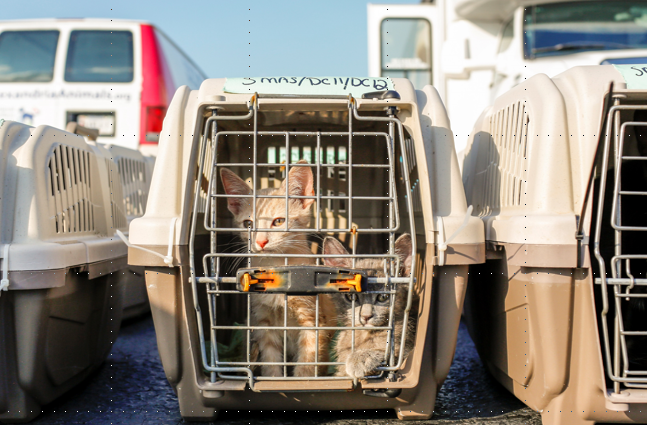News, ideas & inspiration from industry leaders

Best Practices: New Standards for Transport During COVID-19
Brad Shear, CAWA, chair of The Association’s Best Practices and Emerging Trends Committee and Board of Directors, shares important updates to the Best Practices Guidelines for Companion Animal Transport. Use these new guidelines to help make sure staff and volunteers stay safe while doing this lifesaving work.
The Association has now completed four best practices guidelines aimed at elevating the animal welfare movement to provide the best possible care for both animals and people. Our first best practice focused on companion animal transport. We now think of long-distance animal transport as an integral part of what we do, but not so long ago the idea that we would move animals long distances for adoption was a foreign concept. Back then, we wouldn’t have thought there would be an empty shelter somewhere to take those animals.
Those receiving shelters did exist, and partnerships began to form. Animals started to move across communities, across states, and across the country. Sometimes volunteers would transport one animal in their personal car, and sometimes organizations might rent a van for transport. Soon we began to see organizations purchasing their own purpose-built vehicles designed specifically to safely transport animals long distances. As animal transport continued to grow, we started to hear horror stories about the impacts from being transported in substandard conditions. At the same time, as is often the case in our field, innovators were focusing on raising the bar on how to create the best systems possible for this emerging lifesaving practice.
Best practices guides are living documents
It was these innovators who came together to write our first transport best practice. Four years later, another group came together to update that first best practice with new industry developments, including standards for air transport and transport hubs. From the beginning of this initiative we have been committed to maintaining our best practices as living documents. With that in mind, we have issued new standards for transport during the COVID-19 pandemic.
In March, when stay-at-home orders were becoming widespread across the country, many of us chose—or were required—to cease interstate transport of animals. Immediately, discussions began about whether we could or should try to safely move animals across state lines. To answer that question, we brought back together the transport experts who had worked on the original document. As with all of our best practices, our first priority was safety-— of both animals and humans.
Amendments for transport during COVID-19
With safety as our foundation, the committee considered how to comply with newly issued mandates, and the vast differences between how states were impacted and responding to the pandemic. The Association’s best practice guides have always been focused on the best way to function, not the minimum standards required to function. We applied this standard to transporting animals during the COVID-19 crisis, and have created an amendment to the Companion Animal Transport Best Practice that provides guidance for organizations willing and able to continue this lifesaving activity during the pandemic.
As with all of our best practice documents, I recommend bringing together everyone involved in your transport and reviewing the new document together. Work together to meet these standards wherever possible. If you’re like me, your staff and volunteers’ safety, along with the safety of the animals in your care, are paramount. This new guide will help you make sure they stay safe while still saving animals.
Learn more
Website: The Association’s Best Practices
Download: New Guidelines: COVID-19 Transport Protocols



